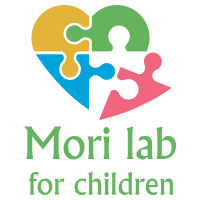How are the juvenile properties established in juveniles? Children can grow, learn, adapt, mature, regenerate, and show resilience. Children and adults possess the same sets of genomes, but they are very different. One reason behind the difference is the usage of the genome. Children use a different set of genes for growth, maturation, and other juvenile properties.
Children use or express a unique set of genes that are not used as much by adults, the gene set we call "juvenility-associated genes (JAGs)" [Reference 1]. Our assumption is that the juvenile properties of children are achieved by the function of the JAGs. We so far identified some essential functions of JAGs including "SRSF7" and "BEX1".
SRSF7, a JAG, mediates alternative splicing that takes a unique pattern to juvenile. We call the juvenile-specific splicing as ADAS (age-dependent alternative splicing), and please refer to the ADAS page.
BEX1 is also a JAG that encode a intrinsically disordered protein (IDP). IDP is a group of protein with very interesting features and forms "phase-separated compartment" in a cell. The function of BEX1 is explained in detail here.
We also identified JALNCs (juvenility-associated lncRNAs). JALNCs are long noncoding RNA (lncRNA in short) that are selectively expressed in juvenile. The lncRNAs are not translated to protein and function as the form of RNA. Among the JALNCs, we found one, called "Gm14230", was highly evolutionarily conserved. The JALNC "Gm14230" functions by repressing TGIF2 gene that is implicated in brain development. The role of Gm14230 is maintain "cellular juvenescence" in juvenile cells. Without Gm14230, the cells undergo premature senescence and stop growing. For more information, please check our paper or contact us.

